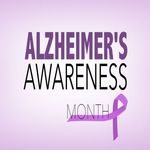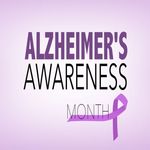
November is Alzheimer’s Awareness Month. President Ronald Reagan first designated November as Alzheimer’s Awareness Month in 1983 as a means to bring awareness to the complex neurological disease.
Alzheimer’s is a type of dementia that affects memory, thinking and behavior. Symptoms eventually grow severe enough to interfere with daily tasks. Alzheimer’s is the most common cause of dementia, a general term for memory loss and other cognitive abilities serious enough to interfere with daily life. Alzheimer’s disease accounts for 60-80 percent of dementia cases.
Alzheimer’s is not just memory loss. Alzheimer’s kills. It is the sixth leading cause of death in the United States. The Alzheimer’s Association’s most recent report from 2019 for the State of Georgia indicated that there were 4,221 deaths from Alzheimer’s disease.
The Alzheimer’s Association reports that more than six million people in the United States are living with Alzheimer’s disease.
According to the Alzheimer’s Association, one in three seniors dies with Alzheimer’s or another dementia; this complex neurological disease kills more than breast cancer and prostate cancer combined.
The most common early symptom of Alzheimer’s is difficulty remembering newly learned information because Alzheimer’s changes typically begin in the part of the brain that affects learning. As Alzheimer’s advances through the brain, it leads to increasingly severe symptoms, including disorientation, mood and behavior changes; deepening confusion about events, time and place; unfounded suspicions about family, friends and professional caregivers; more serious memory loss and behavior changes; and difficulty speaking, swallowing and walking.
The Alzheimer’s Association also notes that Alzheimer’s and dementia deaths have increased 16 percent during the COVID-19 pandemic.
The 10 early signs and symptoms of Alzheimer’s Disease include the following:
- Memory loss that disrupts daily life.
- Challenges in planning or solving problems.
- Difficulty completing familiar tasks.
- Confusion with time or place.
- Trouble understanding visual images and spatial relationships.
- New problems with words in speaking or writing.
- Misplacing things and losing the ability to retrace steps.
- Decreased or poor judgment.
- Withdrawal from work or social activities.
- Changes in mood and personality.
If you notice any of these signs or symptoms, don’t ignore them. Schedule an appointment with your doctor.

